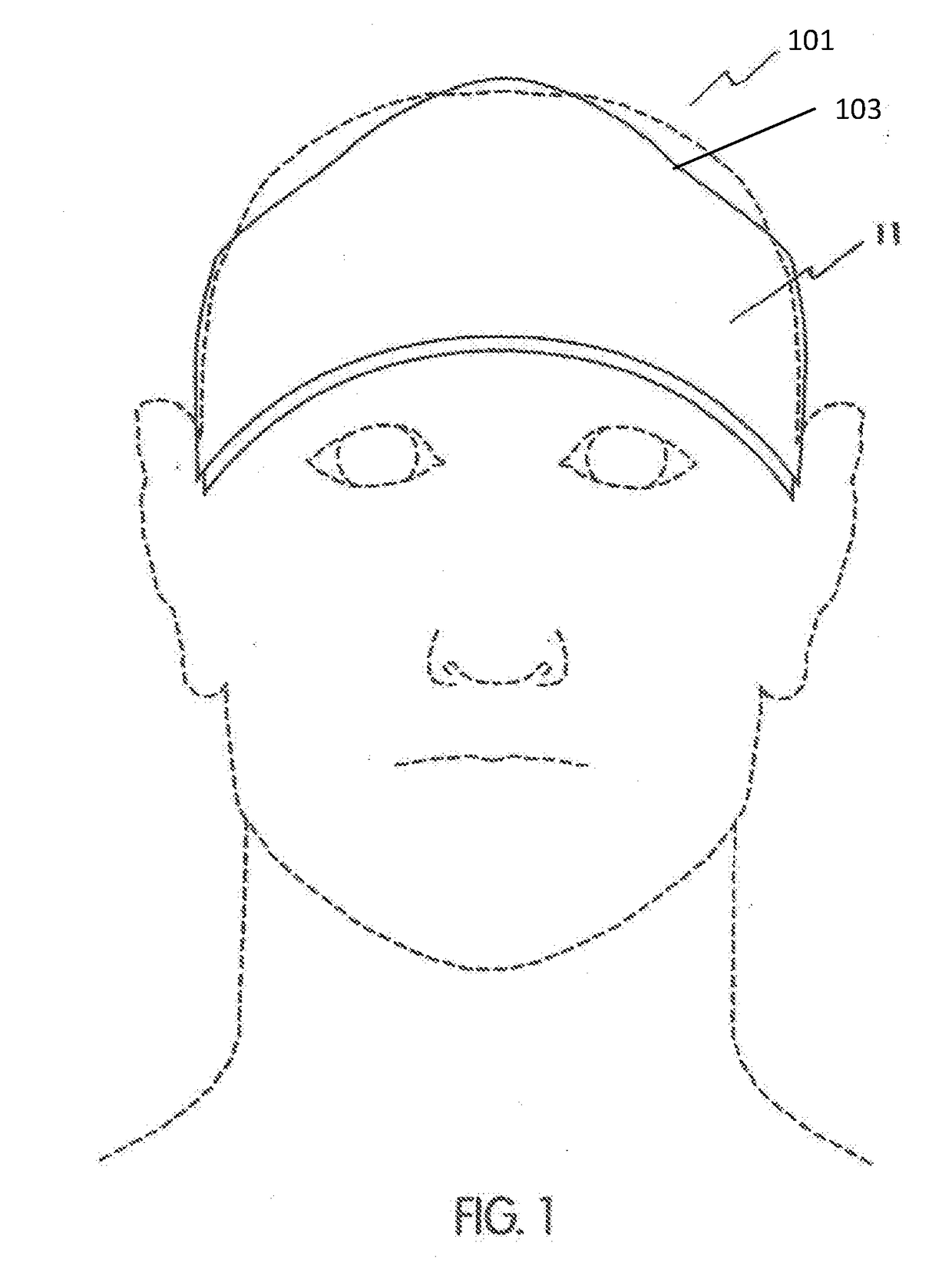Non-invasive brain temperature regulating devices for enhancing sleep
a non-invasive, brain temperature-regulating technology, applied in the direction of contraceptive devices, respirators, surgery, etc., can solve the problems of many people not getting enough sleep, many suffering from lack of sleep, and most of those with these problems go undiagnosed and untreated, so as to enhance the sleep of a subject and enhance the sleep of the subject
- Summary
- Abstract
- Description
- Claims
- Application Information
AI Technical Summary
Benefits of technology
Problems solved by technology
Method used
Image
Examples
Embodiment Construction
[0045]In general, described herein are thermal regulation applicators that are specifically configured to be comfortably worn on the subject's head, to thermally regulate (e.g., hold to a predetermined temperature) specific regions of the subject's brain (e.g., the frontal cortex region / prefrontal cortex) while remaining comfortable, and sustaining the temperature of the specific region of the head at a desired temperature for a specific one or more periods of time. In general, these devices may include a thermal transfer region to be worn directly against the subject's skin (in the head region above the frontal cortex) and a thermal regulator region passively holding the predetermined temperature (or predetermined temperature range) which is in thermal contact with the thermal transfer region. All of the apparatuses (devices and systems) herein described are intended to address the subjects comfort while the applicator is maintained in a position above the pre-frontal (or frontal) ...
PUM
 Login to View More
Login to View More Abstract
Description
Claims
Application Information
 Login to View More
Login to View More - R&D
- Intellectual Property
- Life Sciences
- Materials
- Tech Scout
- Unparalleled Data Quality
- Higher Quality Content
- 60% Fewer Hallucinations
Browse by: Latest US Patents, China's latest patents, Technical Efficacy Thesaurus, Application Domain, Technology Topic, Popular Technical Reports.
© 2025 PatSnap. All rights reserved.Legal|Privacy policy|Modern Slavery Act Transparency Statement|Sitemap|About US| Contact US: help@patsnap.com



